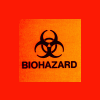Hi I was just wondering how the thermal state of feed, the q value and the q line for Mccabe, is calculated for given feed conditions other than those generally assumed by the typical q lines. e.g. q=1 or q=0 0<q<1 etc.
I understand q=(heat to vapourise feed)/(molar latent heat of feed)
So if given liquid of benzene at 15C in toluene with mole fraction 0.40 benzene in toluene is it possible to calculate q? I think i need to calculate q for heating to boiling point then q for vapourising, but im not entierly sure how. Also what would the boiling point be of this 0.40 feed mixture?
any help appreciated
thanks
|
|
Q Line For Mccabe Thiele
Started by marcus, Jan 08 2010 04:39 PM
5 replies to this topic
Share this topic:
#1

Posted 08 January 2010 - 04:39 PM
#2

Posted 09 January 2010 - 01:30 PM
For a mixture, there is no single boiling point. There is a temperature range within which vaporization occurs, and it is defined by the initial boiling point (beginning of vaporization) and the final boiling point (end of vaporization).
If the feed is a mixture if liquid and vapor, "q" is the fraction that is liquid, i.e. q = 1-y, where y is molar fraction of vapor phase in the feed stream. That is visible from the q-equation you showed in your post.
To cut the story, if you want to know the q-value for your particular case, you need to calculate molar fraction of vapor at given conditions (15C, 0.4mol% benzene, 0.6mol% tolene, pressure is missing). Unless you are in deep vacuum conditions (e.g. P<5 kPa abs), your feed is subcooled liquid.
If the feed is a mixture if liquid and vapor, "q" is the fraction that is liquid, i.e. q = 1-y, where y is molar fraction of vapor phase in the feed stream. That is visible from the q-equation you showed in your post.
To cut the story, if you want to know the q-value for your particular case, you need to calculate molar fraction of vapor at given conditions (15C, 0.4mol% benzene, 0.6mol% tolene, pressure is missing). Unless you are in deep vacuum conditions (e.g. P<5 kPa abs), your feed is subcooled liquid.
#3

Posted 10 January 2010 - 05:31 PM
Hi there, to the best of my knowledge: First you need to calculate q. This is done using the following equation q = latent heat + (Specific heat capacity(boiing boint for Xf - Feed temperaure)) / latent heat
(temperatures are in deg Kelvin)
To draw the q line, your first point can be found where a vertical line from Xf intersects with the 45o line. To find a second point to draw the line use the following equation
Y = (q/(q-1))X - (Xf/(q-1)) Pick an arbitary value for X just a little to either side of Xf. You now have two points to draw the q line.
You will need to get your hands on a boiling point diagram for the benzene toulene mix at a specific pressure, but assuming a pressure of 101.325 kPa Xf at 0.4 would be about 93 oC or 366 kelvin
hope this helps, regards chris
(temperatures are in deg Kelvin)
To draw the q line, your first point can be found where a vertical line from Xf intersects with the 45o line. To find a second point to draw the line use the following equation
Y = (q/(q-1))X - (Xf/(q-1)) Pick an arbitary value for X just a little to either side of Xf. You now have two points to draw the q line.
You will need to get your hands on a boiling point diagram for the benzene toulene mix at a specific pressure, but assuming a pressure of 101.325 kPa Xf at 0.4 would be about 93 oC or 366 kelvin
hope this helps, regards chris
#4

Posted 11 January 2010 - 09:25 AM
Well, both replies are what you need. Anyways, you should take a look at "Unit Operations of Chemical Engineering" by McCabe-Smith chapter distillation (there are better books for this, but this one should do, plus is easy to get). I'm attaching an excel file I made for the same components some time ago. It's in spanish, but you'll get it very quickly.
Good luck!
Good luck!
Attached Files
#5

Posted 13 January 2010 - 01:44 PM
marcus:
You might also find it useful to read this article in the online Citizendium encyclopedia:
You might also find it useful to read this article in the online Citizendium encyclopedia:
Click here ==> McCabe-Thiele method
#6

Posted 16 January 2010 - 02:04 PM
Hi there,
There is an interesting article in the December issue of Chemical Engineering Progress, that will certainly amswer your questions. Its name is:
Visualizing the McCabe-Thiele Diagram
Use this spreadsheet-based visualization and interactive analysis of the McCabe-Thiele diagram to understand the foundations of distillation engineering.
Paul M. Mathias
Appendices -— Visualizing the McCabe-Thiele Diagram
Appendix A. Function Interp; Appendix B. Details of Excel Calculations
Paul M. Mathias
Spreadsheet — Visualizing the McCabe-Thiele Diagram
This spreadsheet produces McCabe-Thiele diagrams for binary systems so that the interacting effect of process variables can be visualized easily and interactively.
There is an interesting article in the December issue of Chemical Engineering Progress, that will certainly amswer your questions. Its name is:
Visualizing the McCabe-Thiele Diagram
Use this spreadsheet-based visualization and interactive analysis of the McCabe-Thiele diagram to understand the foundations of distillation engineering.
Paul M. Mathias
Appendices -— Visualizing the McCabe-Thiele Diagram
Appendix A. Function Interp; Appendix B. Details of Excel Calculations
Paul M. Mathias
Spreadsheet — Visualizing the McCabe-Thiele Diagram
This spreadsheet produces McCabe-Thiele diagrams for binary systems so that the interacting effect of process variables can be visualized easily and interactively.
Similar Topics
Ammonia Line Vapor GenerationStarted by Guest_simadri_* , 07 Apr 2025 |
|

|
||
Flow Through Normally No Flow LineStarted by Guest_iippure_* , 08 Apr 2025 |
|

|
||
Inlet Line Not Free DrainingStarted by Guest_Asifdcet_* , 07 Apr 2025 |
|

|
||
Improving Safety By Re-Routing Priming Vent Line In Centrifugal Pump HStarted by Guest_Srinivas Agastheeswaran_* , 31 Jan 2025 |
|

|
||
Psv On Ko Drum With Flame Arrestor At Flare Vent LineStarted by Guest_Tintin2024_* , 29 Oct 2024 |
|

|

 FB
FB










